Enjoy a bowl of udon noodle soup with a rich, savory pork flavor! Butaniku Udon offers a delightful balance between the richness of the pork and the light, comforting taste of the dashi broth.
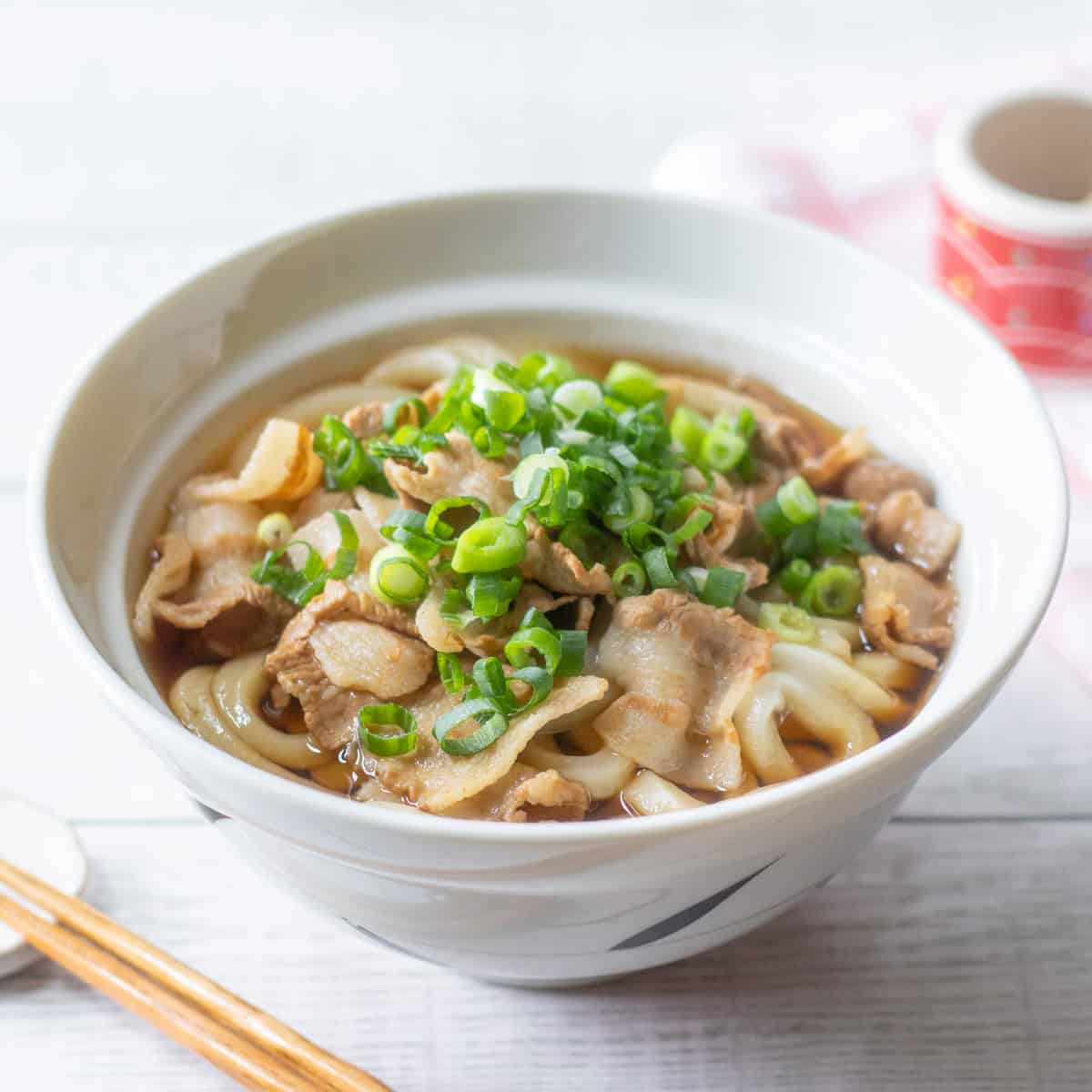
Jump to:
What is Butaniku Udon?
Butaniku Udon is a type of Japanese udon noodle soup made by combining pork with dashi broth. "Butaniku" means pork, and pork belly is typically used in this dish. In regions of Japan where pork is more commonly consumed than other meats, it is sometimes called "Niku Udon" (with "niku" meaning meat).
What really sets this dish apart is the rich, savory flavor of the pork belly. It is not just a topping—its flavor melds with the broth, creating a harmonious, unified taste. The soup, infused with the pork’s flavor, is packed with umami and has a distinct character, making it stand out from other udon soups.
For me, it is a nostalgic dish from my childhood, often made by my father. It might also become a memorable dish for you, so be sure to give it a try!

Why pork belly is essential
Pork belly is commonly used in butaniku udon, mainly due to its high fat content.
When cooked, the fat melts into the broth, infusing it with a deep, savory richness. It doesn't just add a meaty flavor—the fat itself blends with the soup, creating a sense of harmony that envelops the entire dish. This effect can't be achieved with leaner cuts.
Additionally, pork belly remains tender even after cooking, making it an enjoyable topping. When thinly sliced, it combines beautifully with the soup while still providing a satisfying meaty presence.
In short, pork belly isn't just an ingredient—it becomes a crucial part of the broth itself, contributing to the overall flavor experience. Using a different cut would drastically change the dish’s character, so to truly enjoy it, always stick with pork belly.
Recommended dashi for Butaniku Udon
There are various types of dashi broth used in udon noodle soup, but there is one that I particularly recommend for this dish: bonito dashi.
Bonito dashi is one of the most commonly used types of dashi in Japan, known for its strong flavor and rich umami. When paired with pork belly, the two complement each other beautifully, balancing the richness of the fat while leaving a clean finish. It also pairs perfectly with udon noodles.
For an even more authentic flavor, you can make the dashi by adding ingredients such as kombu (kelp), dried shiitake mushrooms, dried anchovies, or mackerel flakes. This adds more depth and creates a complex, layered taste. The combination of ingredients can vary depending on your preference, but bonito dashi should remain the essential base. Try the recipe as it is first, and experience how well the flavors come together.
Regional styles of udon soup seasoning
As long as you have pork belly and bonito dashi, you should be able to make perfect butaniku udon. Before we get to the recipe, let me talk a little about udon soup seasoning.
In Japan, the seasoning of udon soup varies primarily between the Kanto region in eastern Japan and the Kansai region in western Japan. In the Kanto region, a large amount of soy sauce is used, giving the soup a rich color and a strong, salty flavor. In contrast, the Kansai region uses a more flavorful dashi broth and less soy sauce, resulting in a lighter color and milder saltiness.
Butaniku udon can be enjoyed with either style of seasoning, but since I live in Osaka, which is in the Kansai region, and I prefer the Kansai-style seasoning, I'd like to share that version of the recipe with you here.

📋Step-by-step recipe
Ingredients
- 2 servings udon noodles (fresh, dried, pre-cooked, or frozen)
- 5.3 oz thinly sliced pork belly
- 2 green onions / scallions
Bonito dashi (udon broth):
- 3 cups water
- 1 ⅓ cups bonito flakes (katsuobushi)
Seasonings:
- 1 tsp grated ginger
- 1 Tbsp sake
- 1 Tbsp mirin
- 1 tsp sugar
- 3 Tbsp light soy sauce (You can substitute it with regular soy sauce; the main difference is the color.)
Instructions
🕒 Total: 25 minsIf you already have udon broth (bonito dashi or another type of dashi), start from step 3. In that case, use 2 ½ cups (600 ml) for 2 servings.
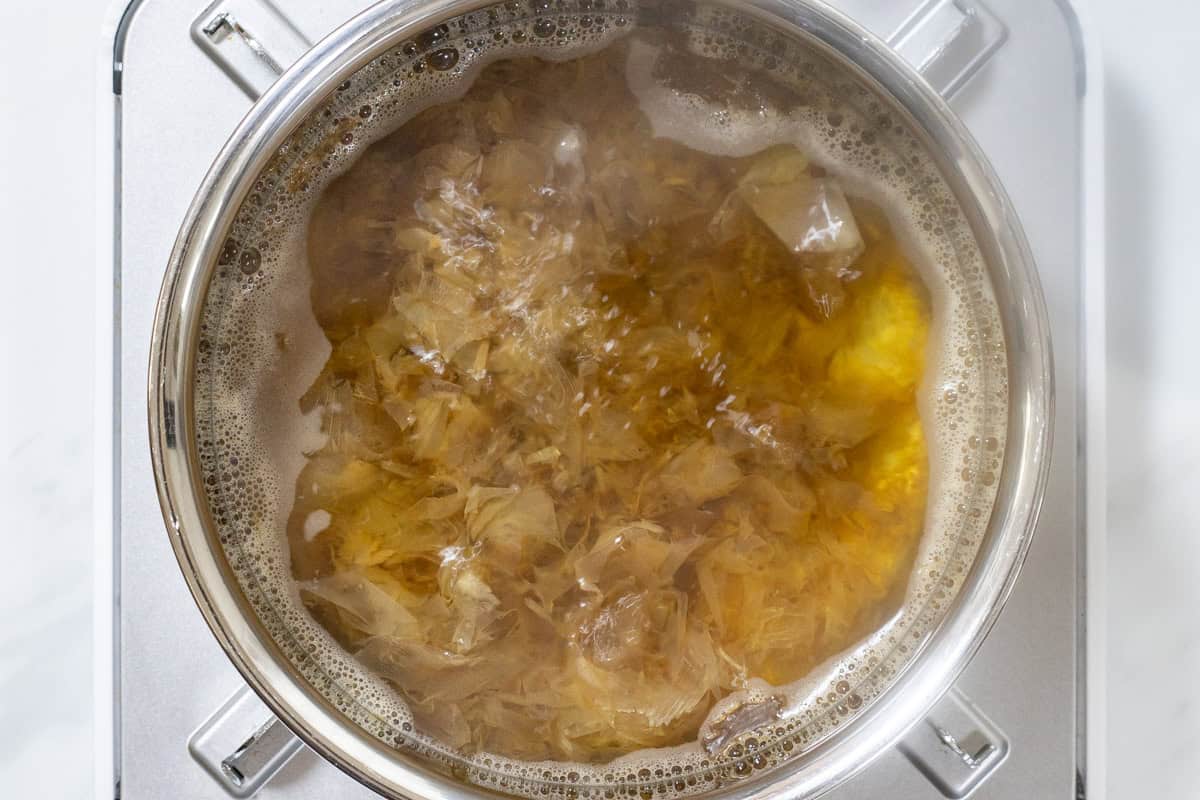
Step 1
Fill a pot with water and bring it to a boil. Once boiling, reduce the heat to low, add bonito flakes, and let it simmer for 6 minutes.
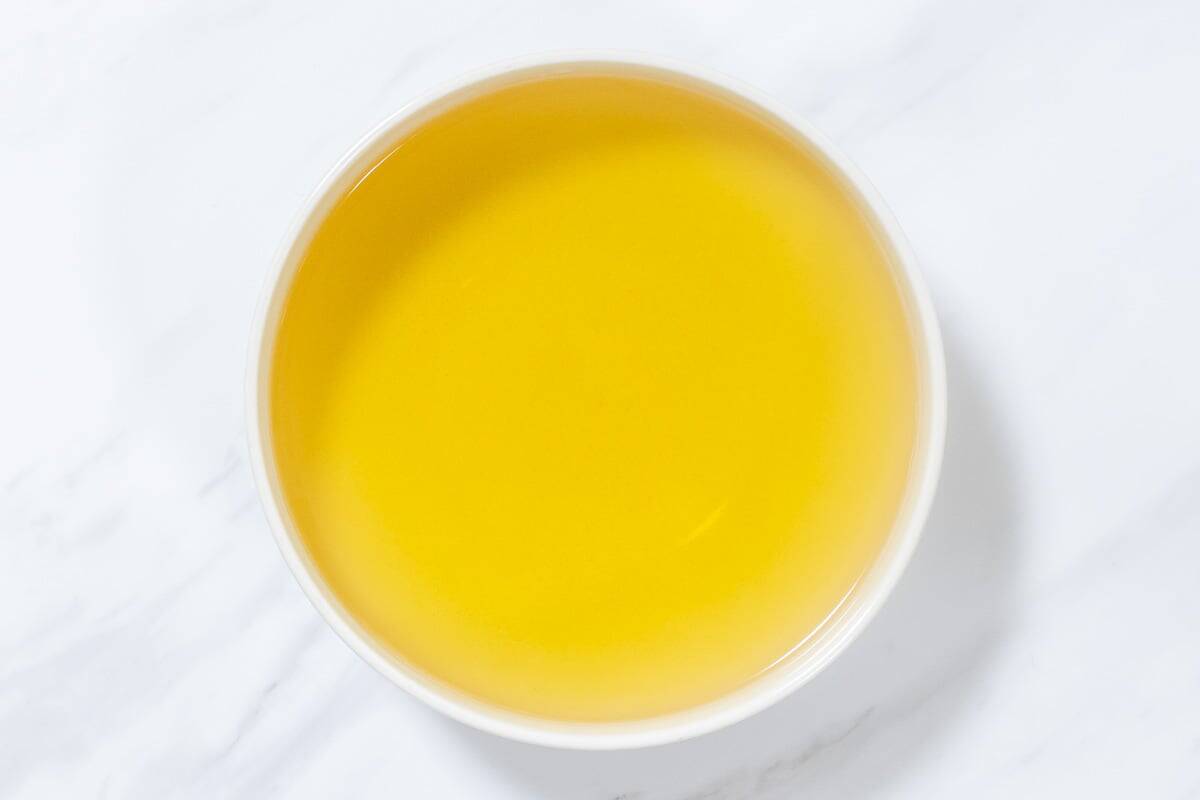
Step 2
Turn off the heat and strain the mixture through a sieve lined with paper towels or a cloth (such as cheesecloth). Alternatively, if you don't mind a few fine bonito flakes remaining, you can simply use a fine-mesh strainer. Bonito dashi (udon broth) is now ready.

Step 3
Cut the pork belly into 1.4-inch (3.5 cm) wide pieces. Thinly slice the green onions.
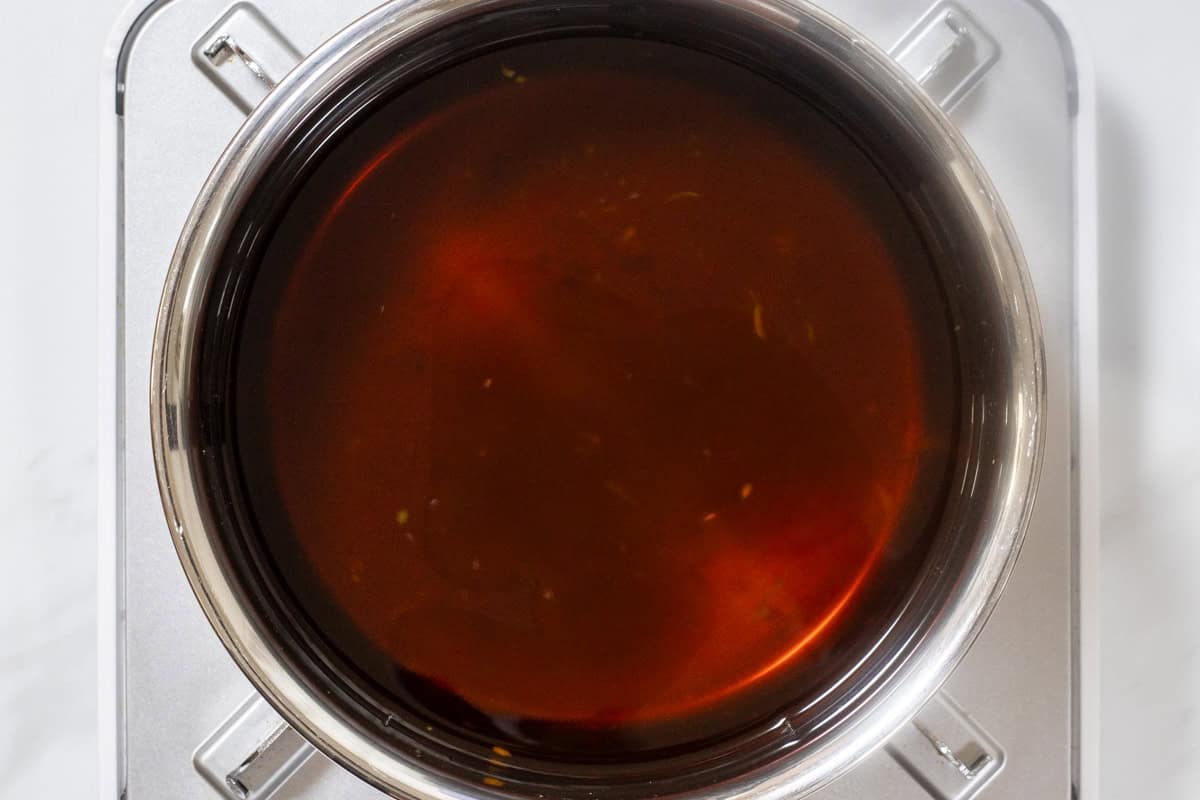
Step 4
Return the dashi to the pot, add the seasonings (grated ginger, sake, mirin, sugar, and light soy sauce), and bring it to a boil.
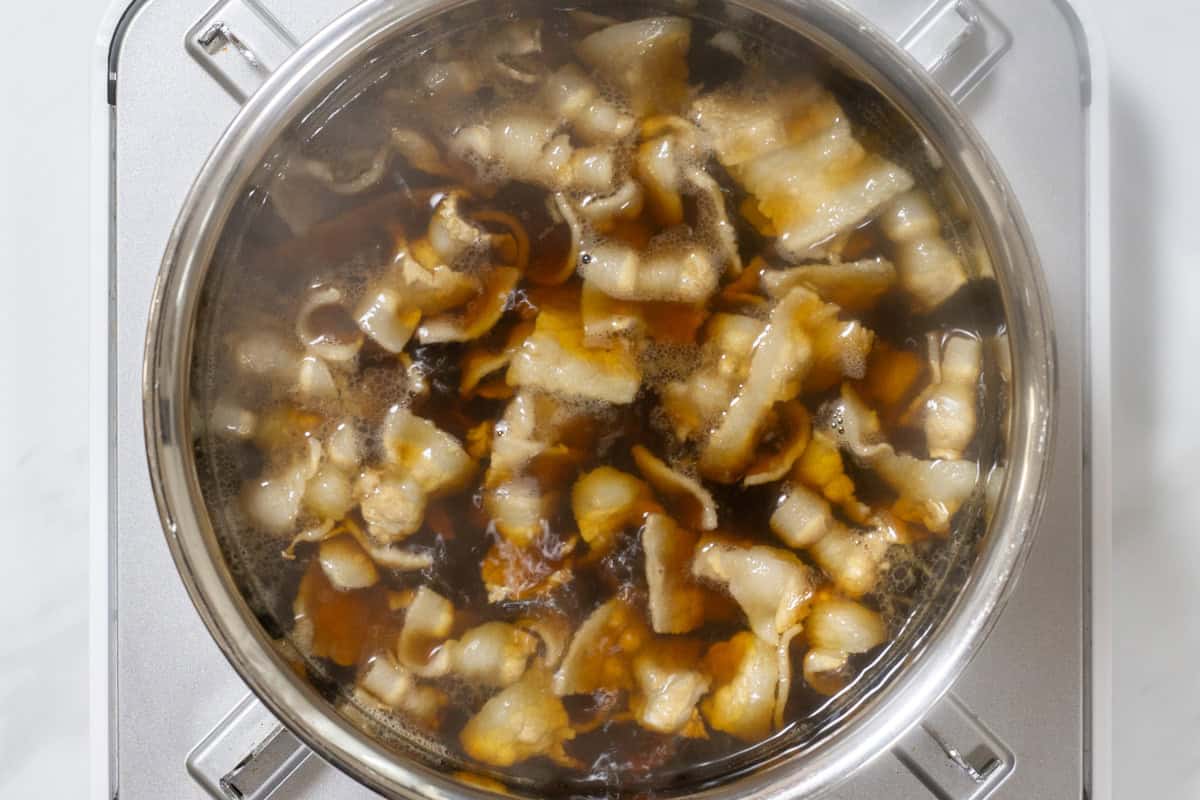
Step 5
Add the pork to the pot and simmer over low heat, skimming off any scum, until it is cooked through.
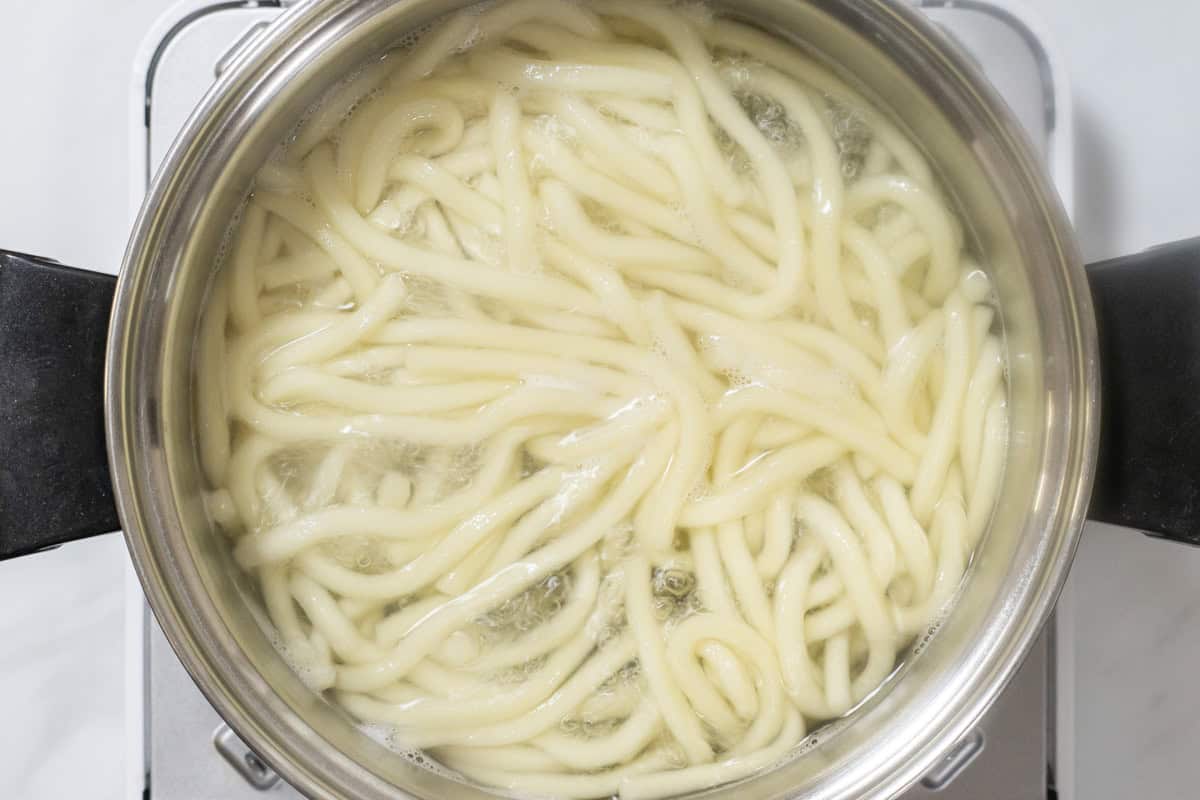
Step 6
If using fresh, dried, or pre-cooked udon noodles: Boil the udon noodles in a separate pot according to the package instructions. Once cooked, drain them in a colander.
If using frozen udon noodles: Lightly sprinkle water over the udon noodles. Then, place them on a microwave-safe plate, cover with plastic wrap or a microwave-safe lid, and microwave on medium power (500-600W) for 3.5 to 4 minutes, or until heated through. (Since this method can cause uneven heating, it is best to microwave one serving at a time. You can also boil them like the other types of udon noodles.)

Step 7
Place the noodles in bowls and pour the soup with the pork over them. Loosen the noodles with chopsticks, then top with the green onions.
To store
This dish is not suitable for storage because cooked udon noodles tend to lose their texture over time, making them less enjoyable. However, the udon soup alone can be stored for up to 3 days.
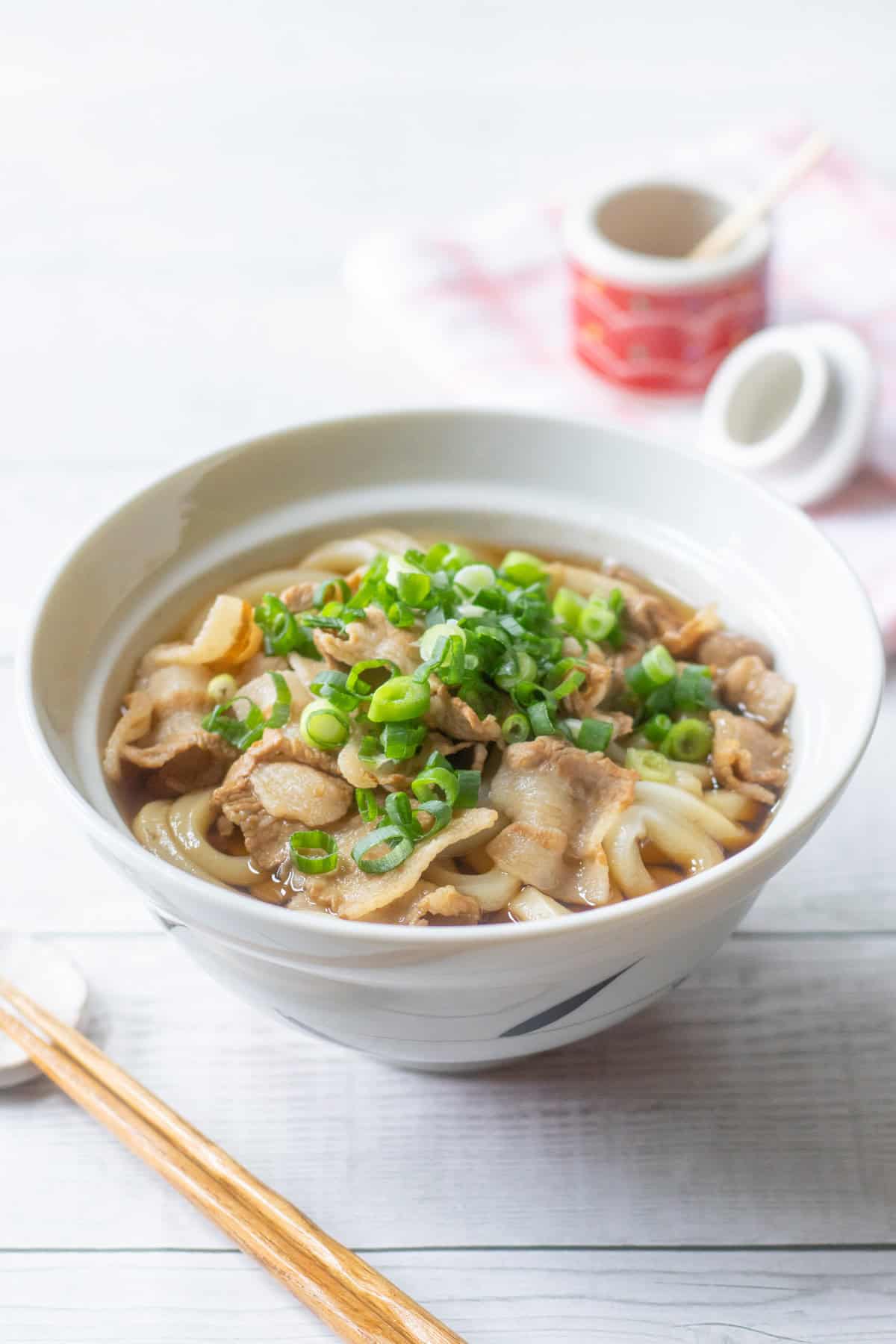
If you try this recipe, I’d love to hear what you think. Please consider leaving a review and star rating in the comments below. If you enjoyed it, I’d really appreciate it if you shared it with your friends.
More udon recipes you'll love
Recipe card

Butaniku Udon (Pork Belly Udon Noodle Soup)
Ingredients
- 2 servings udon noodles (fresh, dried, pre-cooked, or frozen)
- 5.3 oz thinly sliced pork belly
- 2 green onions / scallions
Bonito dashi (udon broth):
- 3 cups water
- 1 ⅓ cups bonito flakes (katsuobushi)
Seasonings:
- 1 tsp grated ginger
- 1 Tbsp sake
- 1 Tbsp mirin
- 1 tsp sugar
- 3 Tbsp light soy sauce (You can substitute it with regular soy sauce; the main difference is the color.)
Instructions
- Fill a pot with water and bring it to a boil. Once boiling, reduce the heat to low, add bonito flakes, and let it simmer for 6 minutes.
- Turn off the heat and strain the mixture through a sieve lined with paper towels or a cloth (such as cheesecloth). Alternatively, if you don't mind a few fine bonito flakes remaining, you can simply use a fine-mesh strainer. Bonito dashi (udon broth) is now ready.
- Cut the pork belly into 1.4-inch (3.5 cm) wide pieces. Thinly slice the green onions.
- Return the dashi to the pot, add the seasonings (grated ginger, sake, mirin, sugar, and light soy sauce), and bring it to a boil.
- Add the pork to the pot and simmer over low heat, skimming off any scum, until it is cooked through.
- If using fresh, dried, or pre-cooked udon noodles: Boil the udon noodles in a separate pot according to the package instructions. Once cooked, drain them in a colander.If using frozen udon noodles: Lightly sprinkle water over the udon noodles. Then, place them on a microwave-safe plate, cover with plastic wrap or a microwave-safe lid, and microwave on medium power (500-600W) for 3.5 to 4 minutes, or until heated through. (Since this method can cause uneven heating, it is best to microwave one serving at a time. You can also boil them like the other types of udon noodles.)
- Place the noodles in bowls and pour the soup with the pork over them. Loosen the noodles with chopsticks, then top with the green onions.
Notes
- If you already have udon broth (bonito dashi or another type of dashi), start from step 3. In that case, use 2 ½ cups (600 ml) for 2 servings.
- This dish is not suitable for storage because cooked udon noodles tend to lose their texture over time, making them less enjoyable. However, the udon soup alone can be stored for up to 3 days.




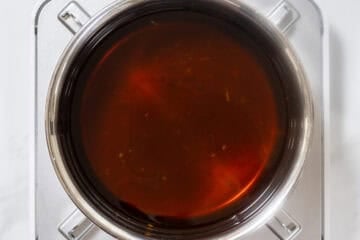
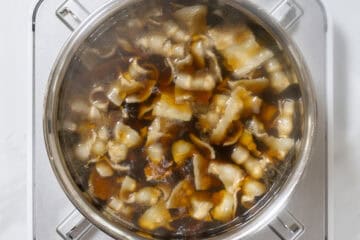
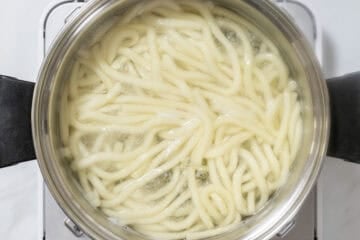
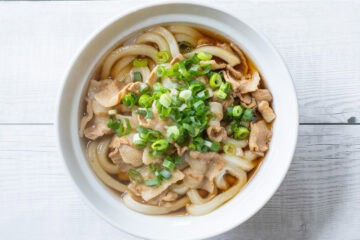

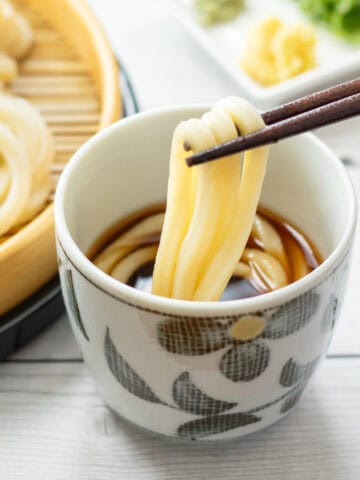


Leave a Rating and a Comment